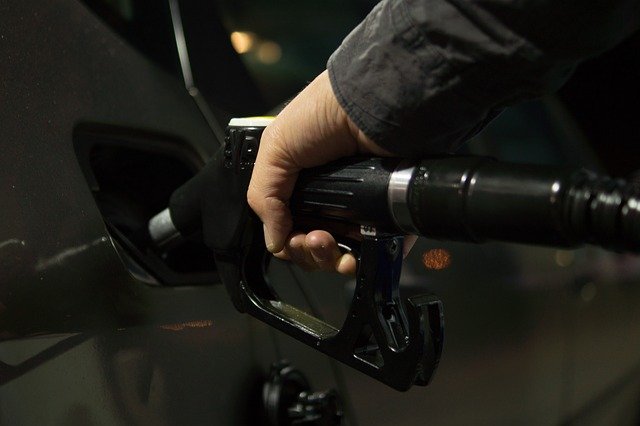

This article is only available to Macro Hive subscribers. Sign-up to receive world-class macro analysis with a daily curated newsletter, podcast, original content from award-winning researchers, cross market strategy, equity insights, trade ideas, crypto flow frameworks, academic paper summaries, explanation and analysis of market-moving events, community investor chat room, and more.
Summary
- The cost of owning and operating a car has increased sharply since the pandemic thanks to higher costs for insurance, licencing, taxes, and finance.
- Remote work and a greater desire for Americans to travel abroad have also driven a shift toward air travel versus via a car.
- Meanwhile, more fuel-efficient vehicles and EVs have also reduced the US economy’s gasoline intensity.
Market Implications
- Weak gasoline demand does not indicate a weak US consumer but changing travel patterns.
- Gasoline demand is unlikely to reach 2018’s highs again, as EVs and more efficient vehicles slowly replace older models.
Gasoline Demand Has Been Soft Year to Date
US gasoline demand has been weak relative to previous years and below the 5-year average (Charts 1 and 2). We argue this weakness reflects a substitution of public transport and car driving with mainly air travel, due to sharp increases in car user costs.
Relative to incomes, consumer spending on transportation goods and services is roughly similar to pre-pandemic. Still, the share of public transportation services, specifically air travel, has increased and that of motor vehicle services (maintenance and repair, leasing and rentals) has fallen (Charts 3 and 4). By contrast, the share of income spent on cars and light trucks purchases has remained roughly constant.
Spending on cars and light trucks, which are durable goods, cannot be directly compared with spending on public transportation, which is services. Ideally, we want to compare public transportation spending and cost with spending and user cost of driving a car (depreciation, maintenance, taxes, and funding). While the latter is not directly available, data shows it has increased.
Car and Truck User Costs Increased Sharply
During the pandemic the price of motor vehicles services, a close proxy to the user cost of a car, rose sharply (Chart 5). It continued rising even after the cost of vehicles levelled off, which could signal residual shortages in qualified workers or parts. Alternatively, it could signal the price of cars, including adjustments for quality, is underestimated in the consumer price indices (Chart 6).
During the pandemic, car manufacturers produced mainly luxurious vehicles, which raised the average prices consumers paid because choice was limited.
Because CPI and PCE adjust car prices to reflect the many bells and whistles provided with top-of-the-line vehicles, the indices disconnected from the actual costs to consumers. The disconnect was largest for trucks (Americans buy four times as many trucks as cars).
The Department of Transportation’s annual cost of owning and operating a car confirms this. It shows a sharp increase (in current dollars) in 2022-23 (Chart 7). Fixed costs have largely driven the increase (i.e., depreciation, insurance, licensing registration, taxes, and finance charges, which tend to reflect higher car prices).
Americans are driving less and flying more because of these higher prices, which has impacted US energy consumption (Chart 9).
Work From Home, and Changing Preferences
Following the pandemic, changing preferences are also reducing gasoline demand.
Despite headlines to the contrary, Pew data shows in the US, around 41% of employees still work in a part-time remote or hybrid setup. This shift has structurally reduced gasoline demand from pre-pandemic as miles travelled per person have fallen and remain below pre-Covid levels (Chart 8).
A shift towards air travel occurred as the economy reopened. Initially seen as ‘revenge travel’, this trend continues in 2024, when monthly passengers on US airlines increased 11% versus the same period in 2018 (Chart 9).
However, given more people are flying, why is jet fuel demand still below pre-pandemic levels? This is due to Boeing’s lower aircraft deliveries and the engine recall scandal impacting the Airbus A320. This has generally made flights fuller, and the boost to jet fuel demand has been smaller than expected.
Lastly, jet fuel, at 8%, represents a much smaller portion of US oil demand, versus gasoline at 44%. Therefore, increases in jet fuel usage are unlikely to completely compensate for weakness in gasoline.
EV and Fuel Efficiency Impact
However, there is one final question. Given vehicle miles travelled in 2024 increased 1% since last year, why has gasoline demand declined almost 2% over the same period?
We think this is due to the combination of EVs and more fuel-efficient vehicles replacing older models.
For instance, pre-pandemic, 240,000 miles travelled consumed around 8.8mn b/d of gasoline. Today, that number is far smaller at just 8.4mn b/d (Chart 11).
Last year, total vehicle sales exceeded 16mn vehicles. 15mn were autos and light trucks of which 1.5mn were EVs. These vehicles likely replaced much older and less efficient models, thus cutting gasoline demand. We think this trend is likely to continue. This means gasoline demand will tell us less and less about the state of the consumer, and more about the type of vehicles on the road.
.
Viresh Kanabar is an investment strategist with 8+ years of experience, notably contributing to portfolio construction and risk management at CCLA Investment Management, a £12 billion fund. Viresh was also a voting member of the Investment Committee and ran the private asset valuation process.
.
Dominique Dwor-Frecaut is a macro strategist based in Southern California. She has worked on EM and DMs at hedge funds, on the sell side, the NY Fed , the IMF and the World Bank. She publishes the blog Macro Sis that discusses the drivers of macro returns.
.
